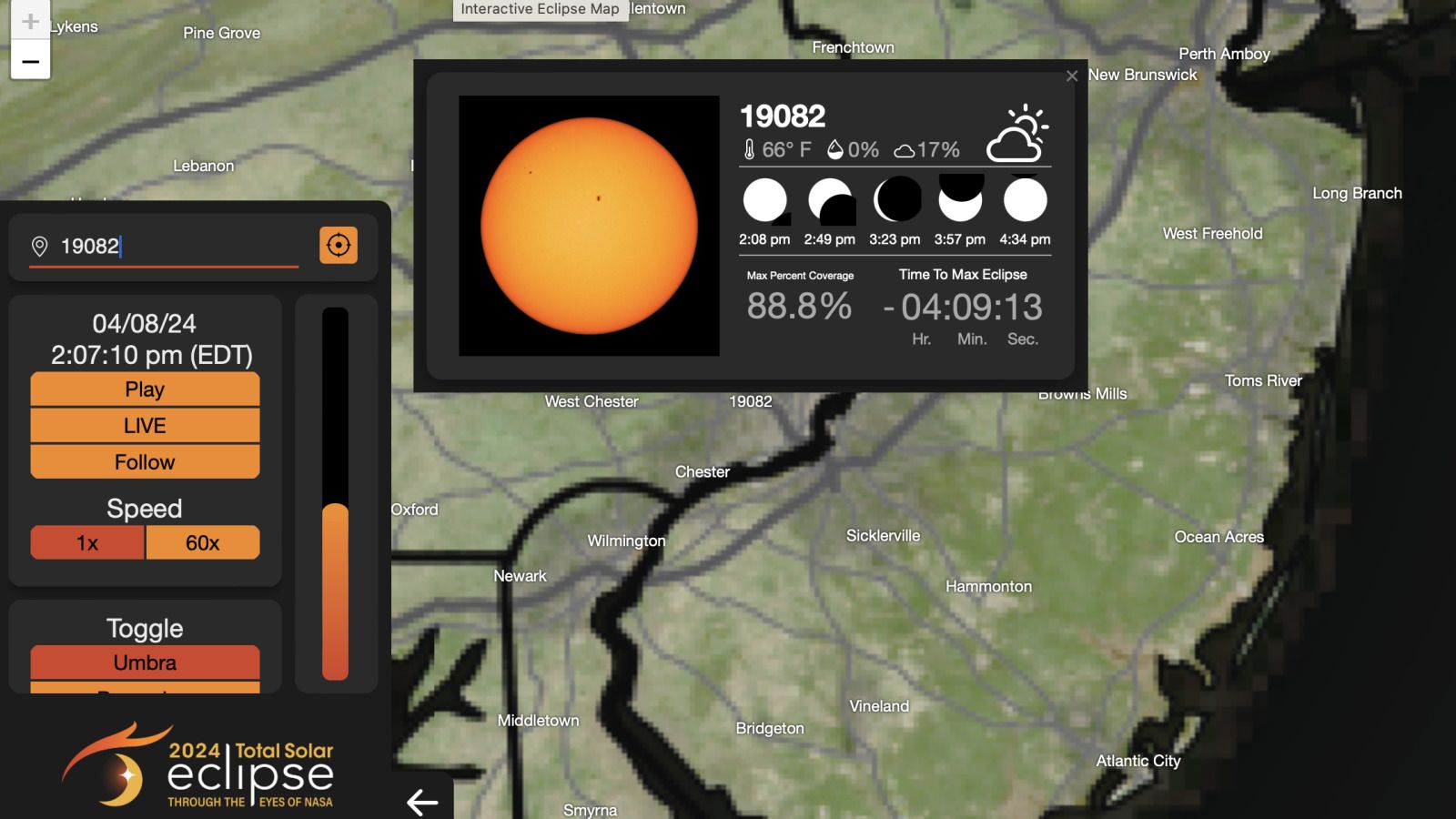The long-awaited solar eclipse is finally here, but many Americans are wondering what time the solar eclipse can be seen from their region.
WLT reported previously that the path of totality will include “Texas, Oklahoma, Arkansas, Missouri, Illinois, Indiana, Ohio, New York, Pennsylvania, Vermont, New Hampshire and Maine, along with some areas of Kentucky, Michigan and Tennessee.”
However, just because your state is not in the path of totality doesn’t mean you will not see a partial eclipse.
NASA has created a tool that will give Americans the pleasure of seeing what time they can catch the eclipse.
The tool asks users to submit their zip code in the search bar, and users then can see what time they will be able to see the eclipse and an estimated look at what the eclipse will look like.
Take a look:

Here’s what KIRO 7 reported:
Monday’s solar eclipse will be a spectacular event for people in the path of totality, but even those subjected to a partial view can still enjoy the moon blocking the sun.
All states in the contiguous U.S. will experience some level of the eclipse. However, according to NASA, the states of Texas, Oklahoma, Arkansas, Missouri, Illinois, Indiana, Ohio, New York, Pennsylvania, Vermont, New Hampshire and Maine, along with some areas of Kentucky, Michigan and Tennessee, will be in the path of totality.
The moon will fully cover the sun for up to 4½ minutes, according to The Wall Street Journal. Viewers can get a rare glimpse of the sun’s corona — the outermost part of the star’s atmosphere.
NASA has a tool that shows how the eclipse will look in your area. Just enter your zip code.
Univision has a more interactive tool that simulates the view as the moon moves across the sun.
“Enter your zip code below and you’ll be able to see a re-creation of the eclipse from your city,” the news organization wrote. You can also click here.
Investing in Space: NASA’s tool for seeing the solar eclipse
Every once in a while, the moon gets its moment in the sun. Or rather, in front of the sun.#Space #EclipseExplorer #Solareclipse pic.twitter.com/WLulWlXhSd
— Space News (@Automation404) April 5, 2024
Per CNBC:
Every once in a while, the moon gets its moment in the sun. Or rather, in front of the sun.
Monday’s solar eclipse across a swath of the U.S. is dominating the space conversation at the moment, as people compare weather forecasts and hunt for last-second spots to get in the path of totality.
ADVERTISEMENTIn lieu of your regularly scheduled newsletter programming, check out NASA’s “Eclipse Explorer” — a helpful way to punch in your local area code and see key information, such as timing and a weather forecast. Here’s to clear skies, wherever you may be watching the show!
To view the site, click the following link: NASA



Join the conversation!
Please share your thoughts about this article below. We value your opinions, and would love to see you add to the discussion!